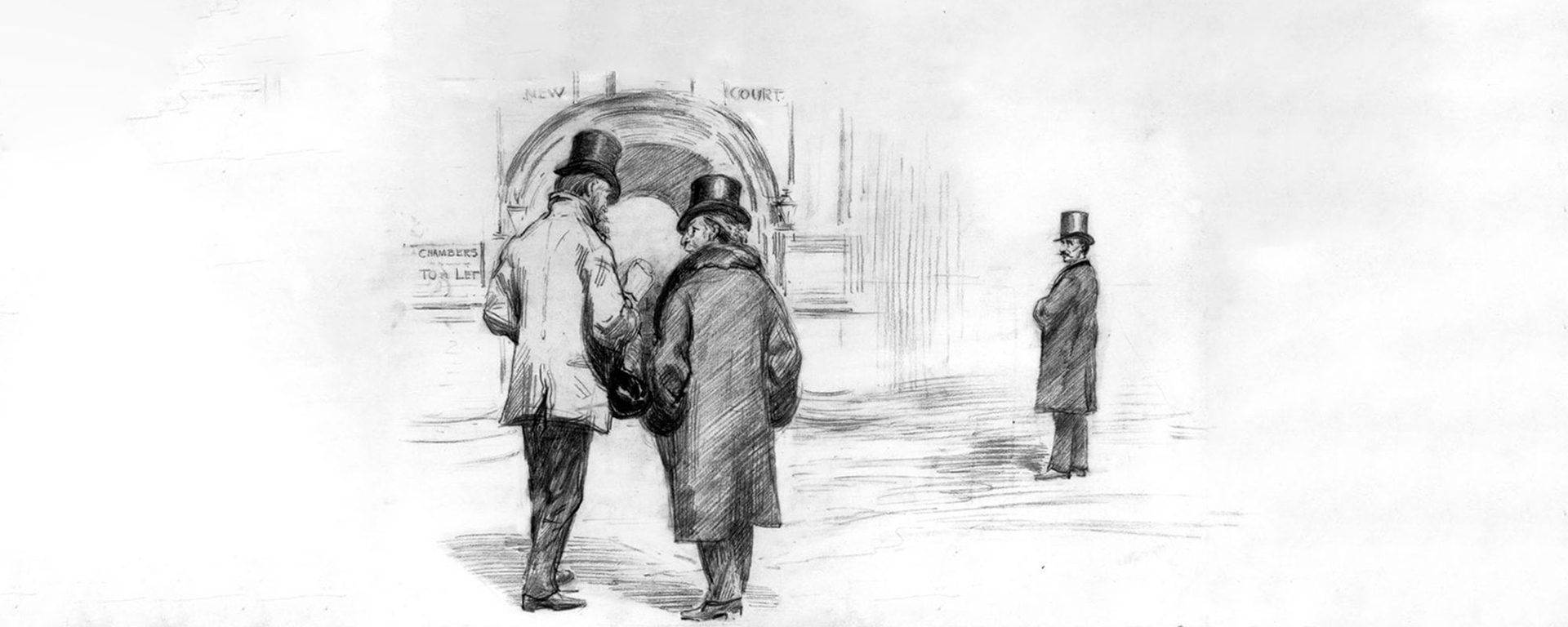Charles Parnell, his solicitor Sir George Lewis and the government spy, Thomas Miller Beach, by Sydney Prior Hall, pencil, published in The Graphic, 16 February 1889, NPG2244
© National Portrait Gallery, London
[T]he modern Special correspondent … must be able, and that at a moment’s notice, to put himself in the position of somebody else; to see with his eyes, to hear with his ears, and to express the results of another’s experience in the first person.
(‘A Versatile Special’, Chambers’s Journal, 20 September 1873, p. 597)
Picturing the News celebrates the rise of a new journalistic phenomenon in the mid-nineteenth century – the emergence of the so-called ‘Special Correspondents’ and ‘Special Artists’ – and reveals them to be distinct and related documentary professions, distinguished by their ‘first person’ perspective. It collects together a range of examples of their work in order to demonstrate a renewed appreciation of the literary, historical and artistic significance of the graphic reportage produced by this pioneering group of individuals, who were dispatched at short notice across the globe to report back from the scene of every newsworthy event of Queen Victoria’s reign.The Specials (as they became known) emerged as a new breed of journalists amidst the massive expansion of the newspaper and periodical press in the nineteenth century. The introduction of the steam printing press early in the century; the spread of the railways throughout the 1840s; the growth of literacy; the abolition of the so-called ‘taxes on knowledge’ during the 1850s and early 60s; the development of telegraph facilities and news agencies; and the expansion of industrial capitalism more generally – all played a part in this rapid growth of the press. Newspapers came to assume a more active role in seeking out the source of news, even at a distance. As an expanding reading public increasingly demanded eyewitness accounts giving the latest intelligence, the ‘Special’ became ‘a necessity’, as George August Sala proclaimed in 1871:
Your newspapers would be as dull as Mr Mathew [sic] Arnold’s prosings, and duller than his poetry, without the Special Correspondent’s aid. The Queen reads the tidings he sends from foreign lands – from the plague-smitten region, from the beleaguered city, from the bloody field of battle. The cabman on his box, the cobbler in his stall, reads them too. He is everybody’s provider.
(‘The Special Correspondent: His Life and Crimes’, Belgravia, April 1871, p. 214)
Although commonly associated with the reportage of war, these artists and correspondents were in fact tasked with routinely chronicling all manner of topical events, both domestic and international in character. However, far from merely reporting the news, what distinguished the work of the Specials was their effort to ‘picture’ it, to transport readers imaginatively to the events described. As the Leisure Hour explained their role: ‘We do not so much hear of the stirring events which take place abroad, as see them through the optics of the correspondent’ (‘Our Own Correspondent’, 1 January 1868, p. 55). Drawing on a new awareness of the parallels between the virtual effects of the ‘word-painting’ of the correspondents and the ‘on-the-spot’ imagery of the artist-reporters, the exhibition highlights the extraordinary nature of their achievements (in visual and literary terms) and challenges the innovatory status otherwise ascribed to photography in the field of documentary news
